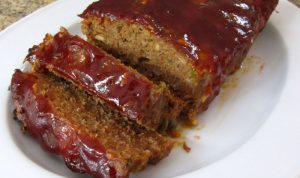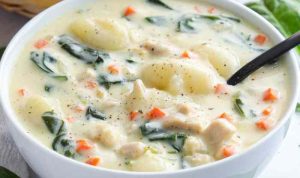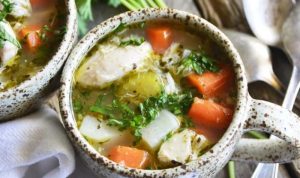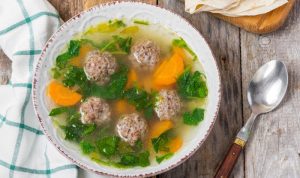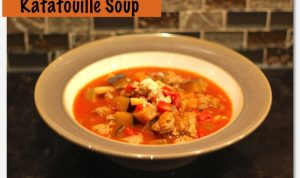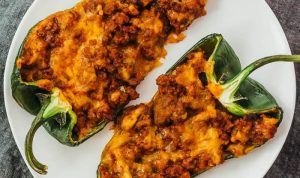Minestone Soup: A Culinary Journey
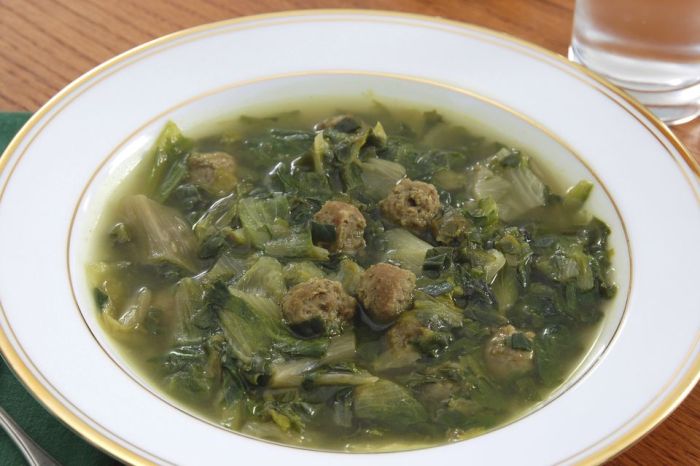
Source: thespruceeats.com
Ministrone soup recipe – Minestone soup, a hearty and flavorful vegetable-based broth, boasts a rich history and diverse regional variations. Its origins trace back to medieval Italy, evolving over centuries to encompass the diverse culinary traditions of different regions. This adaptable soup, known for its abundance of vegetables and often featuring pasta or beans, offers a nutritious and satisfying meal. This article will explore the history, ingredient variations, cooking methods, serving suggestions, and dietary considerations of this beloved classic.
A Brief History and Characteristics of Minestone Soup, Ministrone soup recipe
The history of minestrone soup is interwoven with the agricultural practices and culinary traditions of Italy. Its name, derived from the word “minestra” meaning “soup,” reflects its humble origins as a way to use up leftover vegetables. Regional variations abound, with Ligurian minestrone often featuring pesto, while Florentine versions might include cannellini beans. Generally, minestrone is characterized by its vegetable-based broth, a medley of vegetables (often including beans, pasta, and greens), and a hearty, satisfying texture.
A hearty minestrone soup recipe often includes seasonal vegetables, creating a vibrant and flavorful bowl. If you enjoy rich, earthy soups, you might also appreciate exploring the wonderful world of best mushroom soup recipes , which offer a completely different, yet equally satisfying, culinary experience. Returning to minestrone, remember to adjust the vegetable quantities to your liking for a truly personalized bowl.
The nutritional benefits are significant, providing a good source of vitamins, minerals, and fiber.
Ingredient Variations in Minestone Soup Recipes
Minestone soup recipes exhibit considerable diversity, reflecting the abundance of available ingredients and regional preferences. Common ingredients include carrots, celery, onions, tomatoes, beans (various types), and pasta. Uncommon additions might include potatoes, zucchini, spinach, or even small amounts of meat (such as pancetta or sausage). The following table highlights the common and uncommon ingredients, along with their nutritional value (per 100g serving, approximate values):
| Ingredient Category | Common Ingredients | Uncommon Ingredients | Nutritional Value (approx. per 100g) |
|---|---|---|---|
| Vegetables | Carrots, Celery, Onions, Tomatoes | Zucchini, Potatoes, Spinach, Green Beans | Vary widely, rich in vitamins A, C, K, and fiber |
| Legumes | Cannellini Beans, Borlotti Beans | Lentils, Chickpeas | High in protein and fiber |
| Pasta | Ditalini, Small Shells | Orzo, Rice | Provides carbohydrates for energy |
| Herbs & Spices | Basil, Oregano, Bay Leaf | Rosemary, Thyme, Saffron | Adds flavor and potential antioxidant benefits |
Cooking Methods and Techniques for Minestone Soup
Minestone soup can be prepared using various methods, each impacting the final flavor and texture. Stovetop cooking allows for close monitoring of the ingredients and development of flavor, while slow cookers offer convenience and a more tender result. Pressure cookers significantly reduce cooking time. Below is a step-by-step guide for a classic stovetop method:
- Sauté onions, carrots, and celery in olive oil until softened.
- Add garlic and cook briefly.
- Stir in diced tomatoes, vegetable broth, and beans.
- Bring to a boil, then reduce heat and simmer for at least 30 minutes.
- Add pasta and cook until al dente.
- Stir in greens (if using) during the last few minutes of cooking.
- Season with salt, pepper, and herbs to taste.
Slow cooking results in a more tender soup, while pressure cooking yields a quicker result, potentially at the expense of some nuanced flavors.
Serving Suggestions and Variations of Minestone Soup
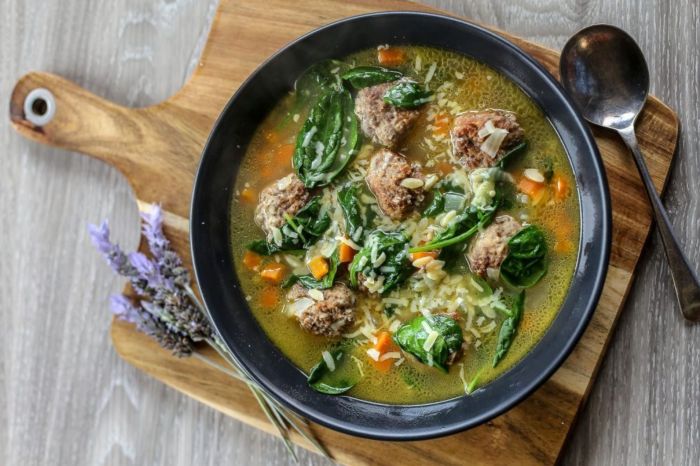
Source: foodblog.it
Minestone soup is incredibly versatile and can be served in various ways, adapting to different preferences and occasions. It can be enjoyed as a light starter, a hearty main course, or even a side dish alongside crusty bread.
| Serving Suggestion | Accompanying Dishes | Recommended Garnishes |
|---|---|---|
| Main Course | Crust bread, salad | Fresh basil, grated Parmesan cheese |
| Starter | None | A drizzle of olive oil |
| Side Dish | Grilled chicken or fish | A sprinkle of chopped parsley |
Vegetarian and vegan variations are easily achieved by omitting meat and using vegetable broth. Adding protein sources like chickpeas, lentils, or white beans increases the protein content.
Visual Representation of Minestone Soup
A perfectly prepared minestrone soup is visually appealing, showcasing a vibrant array of colors and textures. The rich hues of tomatoes, the deep green of spinach (if included), and the earthy tones of carrots and beans create a visually stunning effect. The various textures, from the tender vegetables to the al dente pasta, further enhance its appeal. The soup’s presentation in a rustic bowl, perhaps garnished with fresh herbs, adds to its charm.
Variations using different ingredients will naturally alter the color palette, with a bean-heavy minestrone appearing darker than one featuring lighter vegetables.
Imagine a photograph: a rustic, earthenware bowl brimming with a minestrone soup. The broth is a deep, rich tomato red, punctuated by vibrant green spinach, bright orange carrots, and creamy white beans. Small ditalini pasta adds textural interest, while a sprinkle of fresh basil adds a final touch of green. The overall effect is one of warmth, abundance, and rustic charm.
Dietary Considerations and Adaptations for Minestone Soup
Adapting minestrone soup to meet various dietary needs is straightforward. Gluten-free versions can be achieved by omitting pasta or substituting gluten-free pasta alternatives. Low-sodium versions require careful control of added salt and the use of low-sodium broth. Allergies can be accommodated by substituting ingredients; for example, those with bean allergies can substitute other vegetables or lentils. Calculating the nutritional information of a customized recipe requires adding up the nutritional values of individual ingredients based on serving sizes.
FAQ Corner: Ministrone Soup Recipe
Can I make minestrone soup ahead of time?
Yes, minestrone soup actually tastes even better the next day! Store leftovers in an airtight container in the refrigerator for up to 3 days.
What kind of pasta is best for minestrone?
Small pasta shapes like ditalini, small elbow macaroni, or even broken spaghetti work well in minestrone soup. Choose a pasta that will cook through in the remaining soup time.
Can I freeze minestrone soup?
Yes, you can freeze minestrone soup. Allow it to cool completely before freezing in airtight containers for up to 3 months.
Is minestrone soup always vegetarian?
Traditionally, many minestrone recipes are vegetarian, but they can easily include meat such as pancetta, sausage, or meatballs for a heartier version.

